When Turkish lender Denizbank paid more than $350 million for the building that houses its headquarters in April, the purchase cemented the bank’s place in Istanbul’s most expensive commercial district.
Yet, almost as soon as the ink had dried on the deal for the imposing 34-story tower, the same institution was quietly scouting for alternative premises in another city. The reason wasn’t because of a seismic shift in its business, it was the prospect of seismic activity beneath it.
Earthquakes are unpredictable but also inevitable, and experts say Istanbul might be due one. After the devastation last year in the southeast of the country and criticism the authorities weren’t prepared, banks are now getting ahead on contingency planning. That includes establishing teams in shadow offices in the capital Ankara to ensure continuity should disaster strike.
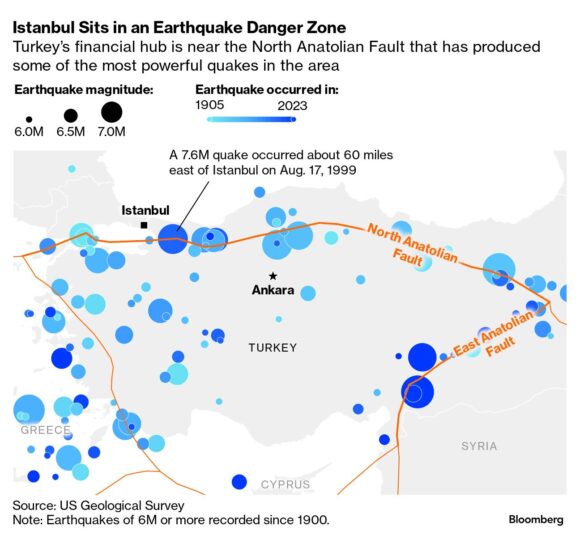
As well as Denizbank, which is owned by Dubai-controlled Emirates NBD, Spanish company BBVA’s Turkish unit Garanti, Qatari-owned QNB Finansbank and development bank TSKB are working on backup plans.
The Turkish central bank, meanwhile, has been recalling some of its personnel to Ankara from all departments despite a new office tower under construction on the Asian side of Istanbul, one of many that have sprouted in recent years as the city develops its financial center. That’s so it can continue operating in the event of an earthquake, a person familiar with the plan said. A spokesman declined to comment.
While Istanbul lies just north of the North Anatolian Fault that runs through Turkey’s northern region, Ankara sits between two major fault lines and farther from risk zones.
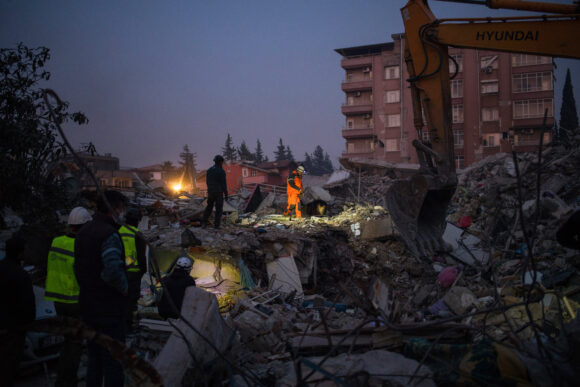
About 40% of Turkey’s industrial facilities lie in the Istanbul metropolitan area, including petrochemical, automotive and textile production, according to an Industry and Technology Ministry report.
The city of almost 16 million people and its surrounding provinces are also a hub for the global supply chain. The Bosphorus Strait, which divides Europe and Asia in Istanbul, is the only passage for ships loaded with oil and grain coming from the Black Sea countries during the war in Ukraine.
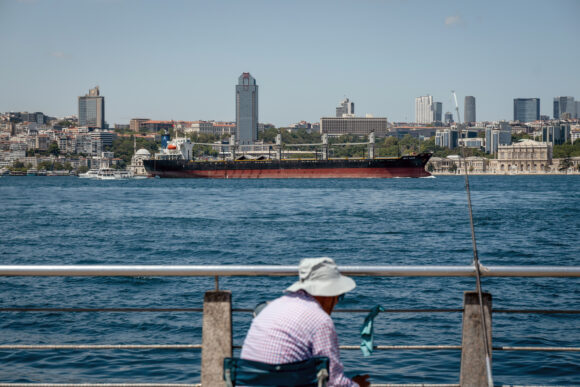
“Given Istanbul’s critical role in Turkey’s industry, it’s essential to assess the potential losses in the event of an earthquake and to implement industrial earthquake risk management plans at national, local, and enterprise levels without delay,” said Nurcan Meral Ozel, a professor at the Kandilli Observatory and Earthquake Research Institute in Istanbul.
The institute expects a quake of 7.33 magnitude to hit at some point, based on a series of calculations using historical precedent. The Disaster and Emergency Management Presidency, meanwhile, is preparing for a 7.5 magnitude quake, only slightly smaller than the ones that hit the southeast in February last year.
Denizbank’s management in Istanbul requested personnel from every unit to be located in Ankara, according to a person familiar with the bank’s strategy, while another said it plans to encourage anyone wanting to relocate to the capital.
The bank said it’s working on what it calls a smaller version of its Istanbul headquarters. The aim is “to ensure that our banking services continue uninterruptedly after a possible earthquake that may affect Istanbul,” the bank said in a response to questions.
QNB Finansbank said it was also backing up its HQ teams in Ankara, while ensuring that all branches and bank buildings are earthquake-resistant. TSKB has relocated some of its personnel to a rented office space in Ankara. The bank declined to comment.
Garanti BBVA is moving its data center and some of its head office, a person familiar with the plans said. The bank said in a statement it ensures a proportion of its “suppliers, facilities and human resources are backed up outside the earthquake zone.”
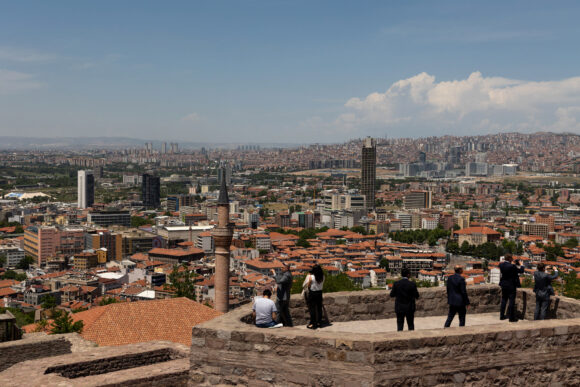
Like with all preparations for catastrophe, the precautions have served to highlight what’s not being done as much as what is.
Other businesses and industries need to step up their planning, according to Erdal Bahcivan, president of the Istanbul Chamber of Industry. That includes making sure facilities are more earthquake proof after a check of all industrial companies in the city, he said.
After the events in eastern Turkey last year, Bahcivan said that about 80% of the industrial facilities in Istanbul’s major districts were built pre-1999, before the country revised its building regulations.
A 2021 report by Turkey’s largest business group, Tusiad, found that coordination between industries was insufficient, while small and medium-sized enterprises stood out with low awareness and insurance cover.
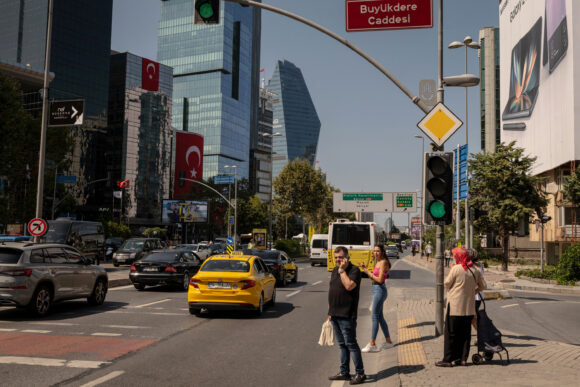
“Given the weight of Istanbul in the national economy and the scenario analysis of a possible earthquake, it is therefore vital that we reduce the expected risk to an acceptable level,” Bahcivan, whose organization has about 25,000 members, said in a written response to questions. “If we do not take action, unfortunately, we will all pay the price as a country.”
The impact would, of course, be huge. Insurers estimate a $300 billion hit to the economy, equivalent to 27% of gross domestic product, according to a senior person in the industry. That would be three times the estimate from last year’s disaster. About $25-$30 billion would be borne by insurance companies, according to the person, who asked not to be identified because of the sensitivity around earthquakes.
Istanbul has always been an earthquake-prone city. Records show that in the summer of 1509, a strong earthquake struck Istanbul shortly after the Ottomans took the city. Chronicles describe thousands crushed to death by collapsed buildings. About 250 years later, in 1766, another strong quake hit, collapsing the minarets of the Blue Mosque.
More recently, a devastating quake 25 years ago in the city of Izmit less than 100 kilometers (62 miles) from Istanbul killed more than 17,000 people in the region. What followed was a financial crisis in 2001, paving the way for Turkish President Recep Tayyip Erdogan’s rise to power.
The risks are not much different to other earthquake zones. Japan was seemingly well prepared and yet the 2011 Tohoku quake triggered a tsunami and caused a nuclear meltdown, resulting in over 15,000 deaths.
Los Angeles, San Francisco, and San Diego sit perilously close to the San Andreas Fault, where experts predict that a powerful quake, often referred to as “The Big One,” is not a matter of if, but when.
The urgency in Istanbul was highlighted again last year when twin quakes devastated Turkey’s southern cities, claiming more than 50,000 lives. Among the criticism leveled at the government by opponents was that housing infrastructure wasn’t built to cope with earthquakes.
With Erdogan’s fondness for construction, Turkey has focused its resources on developing new projects rather than renovating its aging stock.
The government is aware of the danger, according to Murat Kurum, minister of environment and urbanization. Earthquake preparedness is the most urgent priority for Istanbul, he said in the city last week, and that includes retrofitting buildings.
“A potential earthquake is expected in Istanbul, but we will not wait for it—we cannot wait,” he said. “We will not turn a blind eye to this reality, as some might.”
Istanbul Mayor Ekrem Imamoglu, who beat off a challenge by Kurum in municipal elections, estimates the cost to make vulnerable buildings resilient at $20 billion. The World Bank’s broader estimate for Turkey stands at $465 billion to retrofit or rebuild 6.7 million residential units.
But it’s not just about the money. Istanbul is densely populated and packed with multi-story apartments, each owned by different individuals, making it difficult to reach agreements to renew buildings. That’s in addition to the high cost at a time of economic hardship and rampant inflation.
More than 500,000 people live on unstable ground such as riverbeds. Pre-1999 constructions, many of which were built with substandard materials, face the highest risk.
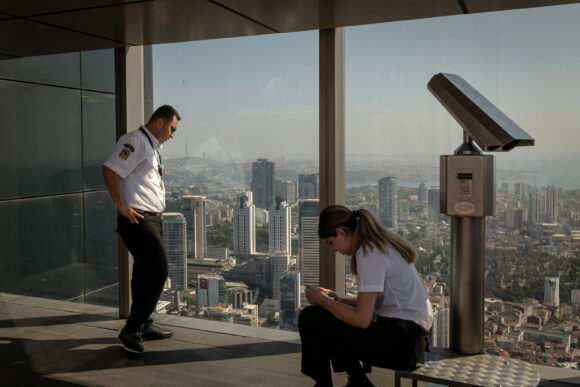
Around 40,000 buildings could suffer “heavy damage” in the next Istanbul earthquake, according to the Kandilli Institute. About 12% of all buildings in Istanbul could see substantial casualties, it said.
“Let’s face it, today it is very difficult to say that either Turkey or Istanbul is ready for the ‘Great Istanbul Earthquake’ expected by the scientific world,” said Bahcivan, the chamber of industry chief. “If we live in this geography, we have to see this issue as the most fundamental, most important potential problem.”
Top photograph: The Istanbul Finance Center offers 1.4 million square meters of office space and is pitched by President Erdogan’s inner circle as a future hub for finance in the region. Photographer: Moe Zoyari/Bloomberg
Was this article valuable?
Here are more articles you may enjoy.


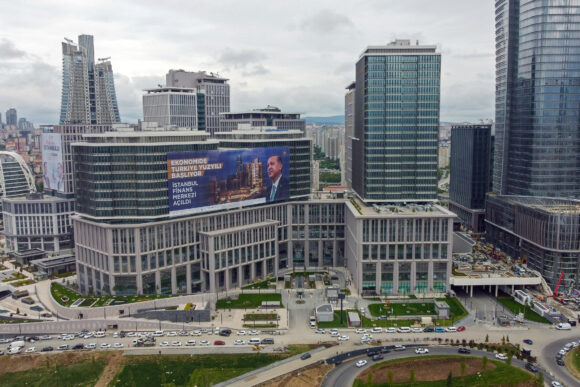
 With American Mobile Out, Florida’s Mobile Home Insurance Market Seems to Have ‘Fallen Apart’
With American Mobile Out, Florida’s Mobile Home Insurance Market Seems to Have ‘Fallen Apart’  Allstate to Sell Employer Voluntary Benefits Business to StanCorp for $2 Billion
Allstate to Sell Employer Voluntary Benefits Business to StanCorp for $2 Billion  Debby’s Florida Claims Already Near 12,000 as Yaworsky Says Market Is Strengthening
Debby’s Florida Claims Already Near 12,000 as Yaworsky Says Market Is Strengthening  Viewpoint: Generative AI in Insurance Isn’t Working
Viewpoint: Generative AI in Insurance Isn’t Working 

